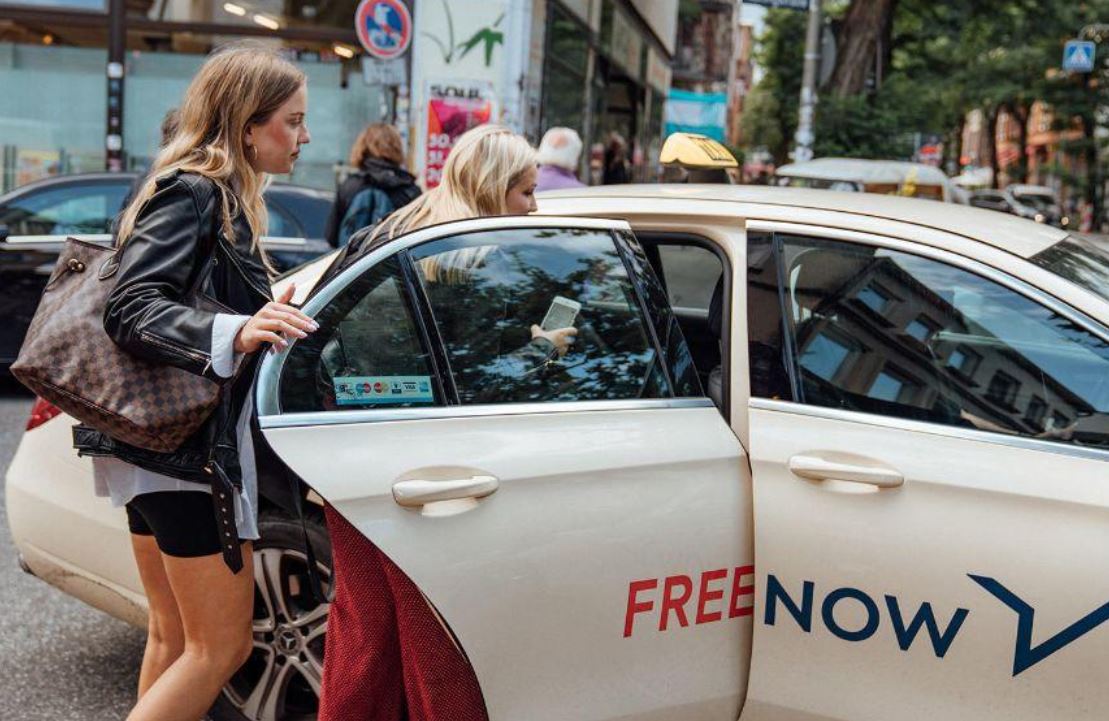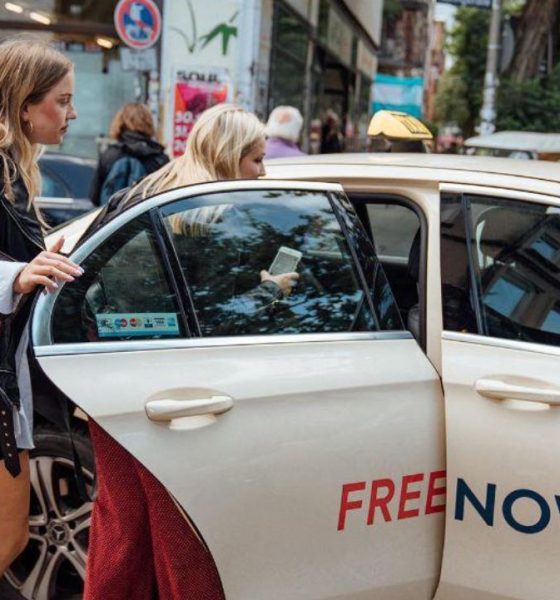

News
Tesla will provide cars for Daimler and BMW subsidiary's mobility service
Tesla has arrived in Germany, and the company appears to have disrupted the local electric car market to such a degree that a BMW and Daimler subsidiary will be purchasing 60 Tesla vehicles to expand its electric car fleet.
The latest report by German publication Sueddeutsche revealed the plan of mobility provider FreeNow, formerly known as Mytaxi, to buy electric cars from Tesla. The company is one of the leading mobility providers in Europe with its services available in over 100 cities and more than 100,000 drivers using its service.
The Hamburg-based mobility company was established in 2009, then it was bought by Daimler in 2014. Last year, Daimler partnered with BMW for its mobility operations and both companies promised to pour in a billion euros to help scale the brand. The joint venture has Uber in its sights, and is poised to eventually challenge the ride-hailing app in Europe and Latin America.
Last year, FreeNow reportedly served 20% more passengers in Germany compared to its 2018 figures. It’s lineup of drivers also increased by 27% or about 28,000 in Germany. Across all markets, it has a user base of 90 million people.
It is not surprising to see why Tesla will be the go-to carmaker of mobility providers in Germany and the rest of Europe, particularly those who operate an electric car fleet. The Model 3 mass-produced sedan, for example, will also be adopted by German taxi operator Taxi Norman because of the potential massive savings in fuel and maintenance costs offered by the vehicle.
Another possible reason why mobility providers would love Tesla vehicles is because these electric cars are practically future-proof. The electric car maker can easily push over-the-air updates to improve the vehicles’ performance or enhance their features.
Of course, one cannot ignore that one day, these Tesla electric vehicles will become Robotaxis once Musk and his team perfect its Full Self-Driving technology and pass the requirements of regulators. Tesla’s neural network also continues to improve and evolve as more and more data are fed into it from the fleet of Teslas on the road today.
According to estimates, FreeNow raked in 2.4 billion euros in 2019 and plans to double that this year. “We know it is aggressive and really ambitious, but we want to double our revenue again next year while further improving our profitability,” said FreeNow CEO Marc Berg.
It seems, as the cliche goes, Tesla really walks the walk to a point that German automotive giants actually trust its products and rely on them to achieve their own ambitious business goals.
As Tesla sets its foothold in Germany with the construction of Gigafactory 4 in Brandenburg and the eventual production of electric vehicles for the country and the rest of Europe, it won’t be a stretch to speculate that more mobility providers would tap Tesla when they transition to electric vehicle fleets.

News
Tesla FSD fleet is nearing 7 billion total miles, including 2.5 billion city miles
As can be seen on Tesla’s official FSD webpage, vehicles equipped with the system have now navigated over 6.99 billion miles.

Tesla’s Full Self-Driving (Supervised) fleet is closing in on almost 7 billion total miles driven, as per data posted by the company on its official FSD webpage.
These figures hint at the massive scale of data fueling Tesla’s rapid FSD improvements, which have been quite notable as of late.
FSD mileage milestones
As can be seen on Tesla’s official FSD webpage, vehicles equipped with the system have now navigated over 6.99 billion miles. Tesla owner and avid FSD tester Whole Mars Catalog also shared a screenshot indicating that from the nearly 7 billion miles traveled by the FSD fleet, more than 2.5 billion miles were driven inside cities.
City miles are particularly valuable for complex urban scenarios like unprotected turns, pedestrian interactions, and traffic lights. This is also the difference-maker for FSD, as only complex solutions, such as Waymo’s self-driving taxis, operate similarly on inner-city streets. And even then, incidents such as the San Francisco blackouts have proven challenging for sensor-rich vehicles like Waymos.
Tesla’s data edge
Tesla has a number of advantages in the autonomous vehicle sector, one of which is the size of its fleet and the number of vehicles training FSD on real-world roads. Tesla’s nearly 7 billion FSD miles then allow the company to roll out updates that make its vehicles behave like they are being driven by experienced drivers, even if they are operating on their own.
So notable are Tesla’s improvements to FSD that NVIDIA Director of Robotics Jim Fan, after experiencing FSD v14, noted that the system is the first AI that passes what he described as a “Physical Turing Test.”
“Despite knowing exactly how robot learning works, I still find it magical watching the steering wheel turn by itself. First it feels surreal, next it becomes routine. Then, like the smartphone, taking it away actively hurts. This is how humanity gets rewired and glued to god-like technologies,” Fan wrote in a post on X.
News
Tesla starts showing how FSD will change lives in Europe
Local officials tested the system on narrow country roads and were impressed by FSD’s smooth, human-like driving, with some calling the service a game-changer for everyday life in areas that are far from urban centers.

Tesla has launched Europe’s first public shuttle service using Full Self-Driving (Supervised) in the rural Eifelkreis Bitburg-Prüm region of Germany, demonstrating how the technology can restore independence and mobility for people who struggle with limited transport options.
Local officials tested the system on narrow country roads and were impressed by FSD’s smooth, human-like driving, with some calling the service a game-changer for everyday life in areas that are far from urban centers.
Officials see real impact on rural residents
Arzfeld Mayor Johannes Kuhl and District Administrator Andreas Kruppert personally tested the Tesla shuttle service. This allowed them to see just how well FSD navigated winding lanes and rural roads confidently. Kruppert said, “Autonomous driving sounds like science fiction to many, but we simply see here that it works totally well in rural regions too.” Kuhl, for his part, also noted that FSD “feels like a very experienced driver.”
The pilot complements the area’s “Citizen Bus” program, which provides on-demand rides for elderly residents who can no longer drive themselves. Tesla Europe shared a video of a demonstration of the service, highlighting how FSD gives people their freedom back, even in places where public transport is not as prevalent.
What the Ministry for Economic Affairs and Transport says
Rhineland-Palatinate’s Minister Daniela Schmitt supported the project, praising the collaboration that made this “first of its kind in Europe” possible. As per the ministry, the rural rollout for the service shows FSD’s potential beyond major cities, and it delivers tangible benefits like grocery runs, doctor visits, and social connections for isolated residents.
“Reliable and flexible mobility is especially vital in rural areas. With the launch of a shuttle service using self-driving vehicles (FSD supervised) by Tesla in the Eifelkreis Bitburg-Prüm, an innovative pilot project is now getting underway that complements local community bus services. It is the first project of its kind in Europe.
“The result is a real gain for rural mobility: greater accessibility, more flexibility and tangible benefits for everyday life. A strong signal for innovation, cooperation and future-oriented mobility beyond urban centers,” the ministry wrote in a LinkedIn post.
News
Tesla China quietly posts Robotaxi-related job listing
Tesla China is currently seeking a Low Voltage Electrical Engineer to work on circuit board design for the company’s autonomous vehicles.

Tesla has posted a new job listing in Shanghai explicitly tied to its Robotaxi program, fueling speculation that the company is preparing to launch its dedicated autonomous ride-hailing service in China.
As noted in the listing, Tesla China is currently seeking a Low Voltage Electrical Engineer to work on circuit board design for the company’s autonomous vehicles.
Robotaxi-specific role
The listing, which was shared on social media platform X by industry watcher @tslaming, suggested that Tesla China is looking to fill the role urgently. The job listing itself specifically mentions that the person hired for the role will be working on the Low Voltage Hardware team, which would design the circuit boards that would serve as the nervous system of the Robotaxi.
Key tasks for the role, as indicated in the job listing, include collaboration with PCB layout, firmware, mechanical, program management, and validation teams, among other responsibilities. The role is based in Shanghai.
China Robotaxi launch
China represents a massive potential market for robotaxis, with its dense urban centers and supportive policies in select cities. Tesla has limited permission to roll out FSD in the country, though despite this, its vehicles have been hailed as among the best in the market when it comes to autonomous features. So far, at least, it appears that China supports Tesla’s FSD and Robotaxi rollout.
This was hinted at in November, when Tesla brought the Cybercab to the 8th China International Import Expo (CIIE) in Shanghai, marking the first time that the autonomous two-seater was brought to the Asia-Pacific region. The vehicle, despite not having a release date in China, received a significant amount of interest among the event’s attendees.








